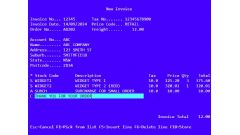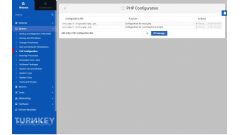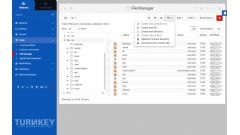CAPCTHAs and alternatives
by johna | December 9, 2009 | Web Security Classic ASP Web Development
CAPTCHAs and their alternatives
The basic purpose of a CAPTCHA (Completely Automatic Public Turing Test to Tell Computers and Humans Apart) is to prevent robots from submitting web forms. By displaying an image that cannot be “read” by a computer, only a human can submit the form successfully.
Most of the time CAPTCHAs are an irritation to legitimate users, and can also cause issues with accessibility unless an alternative audible version of the text or numbers in the CAPTCHA image is also available.
My technique for CAPTCHA in Classic ASP is an image only system which works like this:
When the form is displayed two random numbers are generated. One is used as the number that is generated into an image. The other random number is used as the name of a session variable which contains the first number. This second number is stored as a hidden form field (it doesn't matter that this second number can be easily read). I use a random session variable name so as not to cause problems if the user has multiple forms open, this way each should submit without any conflict. On form submit the script gets the hidden field value and then the value of this session variable and compares this with the user's input. If they don't match the user (or robot) is redirected back to the form and two new random numbers are generated so the process repeats.
A more simple but less effective system that prevents some robots but avoids irritation to legitimate users and accessibility problems is to use a system similar to the CAPTCHA system described above where a random number is generated and added as a hidden form field and also stored in a session variable. On form post the hidden form field value is compared with the session variable value and succeeds only if they match. This means that the form can only be submitted if the user or robot visited the web form page first and posts the random number. This prevents robots that just simulate a form post to a URL from succeeding but doesn't stop the robot if they are willing to retrieve the web form page each time they post a form.
An improvement to this system would be to use a JavaScript script to add the value to the hidden field. Again, this would be fairly easy for a robot to simulate but would mean that the robot would have to be written specifically for the site.
Creating an image or audible CAPTCHA is not possible for some websites, for example in Classic ASP it usually requires a third party server component (although it can be done without one). There are other alternatives.
* Instead of creating a random number you could generate a random mathematical question, for example:
What is five plus twenty-three?
* You could create a database of random questions and answers, for example:
Which is not a colour? Blue, green, apple, orange or black?
* You could show several photos of different objects and ask the visitor to pick which picture contains a certain object.
All of these techniques are easy to produce using a system similar to what I described near the beginning of this article.
* You could create a textbox and set it to display:none in CSS. A robot is likely to fill this field so you can void any form submissions where this textbox is not empty.
* Dynamically change the names of form fields and store their new names in a session variable.
The basic purpose of a CAPTCHA (Completely Automatic Public Turing Test to Tell Computers and Humans Apart) is to prevent robots from submitting web forms. By displaying an image that cannot be “read” by a computer, only a human can submit the form successfully.
Most of the time CAPTCHAs are an irritation to legitimate users, and can also cause issues with accessibility unless an alternative audible version of the text or numbers in the CAPTCHA image is also available.
My technique for CAPTCHA in Classic ASP is an image only system which works like this:
When the form is displayed two random numbers are generated. One is used as the number that is generated into an image. The other random number is used as the name of a session variable which contains the first number. This second number is stored as a hidden form field (it doesn't matter that this second number can be easily read). I use a random session variable name so as not to cause problems if the user has multiple forms open, this way each should submit without any conflict. On form submit the script gets the hidden field value and then the value of this session variable and compares this with the user's input. If they don't match the user (or robot) is redirected back to the form and two new random numbers are generated so the process repeats.
A more simple but less effective system that prevents some robots but avoids irritation to legitimate users and accessibility problems is to use a system similar to the CAPTCHA system described above where a random number is generated and added as a hidden form field and also stored in a session variable. On form post the hidden form field value is compared with the session variable value and succeeds only if they match. This means that the form can only be submitted if the user or robot visited the web form page first and posts the random number. This prevents robots that just simulate a form post to a URL from succeeding but doesn't stop the robot if they are willing to retrieve the web form page each time they post a form.
An improvement to this system would be to use a JavaScript script to add the value to the hidden field. Again, this would be fairly easy for a robot to simulate but would mean that the robot would have to be written specifically for the site.
Creating an image or audible CAPTCHA is not possible for some websites, for example in Classic ASP it usually requires a third party server component (although it can be done without one). There are other alternatives.
* Instead of creating a random number you could generate a random mathematical question, for example:
What is five plus twenty-three?
* You could create a database of random questions and answers, for example:
Which is not a colour? Blue, green, apple, orange or black?
* You could show several photos of different objects and ask the visitor to pick which picture contains a certain object.
All of these techniques are easy to produce using a system similar to what I described near the beginning of this article.
* You could create a textbox and set it to display:none in CSS. A robot is likely to fill this field so you can void any form submissions where this textbox is not empty.
* Dynamically change the names of form fields and store their new names in a session variable.
Related Posts
Converting dBase IV programs to run in the browser
by johna | September 13, 2024
Some pointless entertainment trying to get some old dBase programs running in the browser.
How to set up a debugging using the Turnkey Linux LAMP stack and VS Code
by johna | December 19, 2023
The second part in my guide to setting up a website and database using the Turnkey Linux LAMP stack.
How to set up a website and database using the Turnkey Linux LAMP stack
by johna | November 18, 2023
If you need to host your own website for the purposes of web development, Turnkey Linux LAMP Stack is an easy to install all-in-one solution that you can set up on a spare computer or a VM (Virtual Machine).




Comments
There are no comments yet. Be the first to leave a comment!